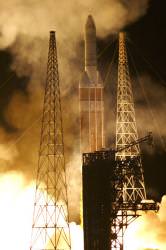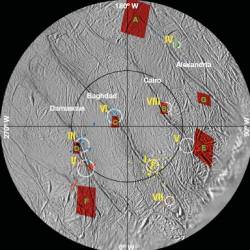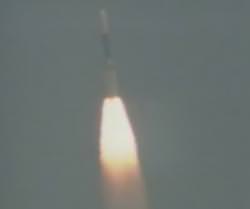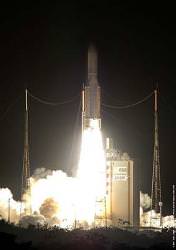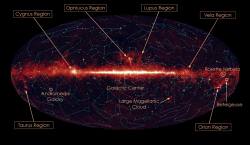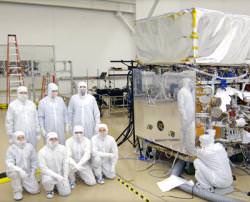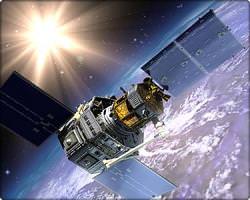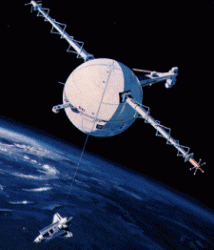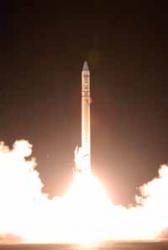On Saturday night, the largest US rocket blasted off, carrying a 2.3 tonne Defense Support Program satellite into orbit. This was the second time a Delta IV-Heavy rocket has ever lifted off. With three core boosters strapped together, it’s like three rockets launched at once.
The launch was made even more spectacular because it was held at night. Launched at 0150 GMT Sunday (20:50 EST on Saturday), the 70-metre tall (230 feet) rocket has three separate engines, each of which can generate more than 2,900 kiloNewtons (650,000 pounds) of force. They guzzle a tonne of propellant every second.
On board the rocket was the Defense Support Program 23 spacecraft; the last in a program of Earth observation satellites designed to spot enemy missile launches and nuclear explosions.
Although the Delta IV-Heavy can carry 13 tonnes into a geostationary transfer orbit, it’s not a commercial provider – just military and government satellites. Europe’s Ariane 5 ECA is the most powerful commercial provider, able to blast off with 10 tonnes.
The Delta IV-Heavy first flew back in 2004. Boeing had originally proposed it as the vehicle that could carry the next wave of space exploration vehicles into orbit. In the end, though, NASA decided to go with the new Ares vehicle for its post-shuttle program.
During that previous test flight, the Heavy encountered a problem with its fuel lines, which caused the engines to go out early, and left the rocket lower than its intended orbit.
Just to put the capabilities of the rocket in perspective, though, the Saturn 5 could put out three times the thrust.
Original Source: United Launch Alliance

